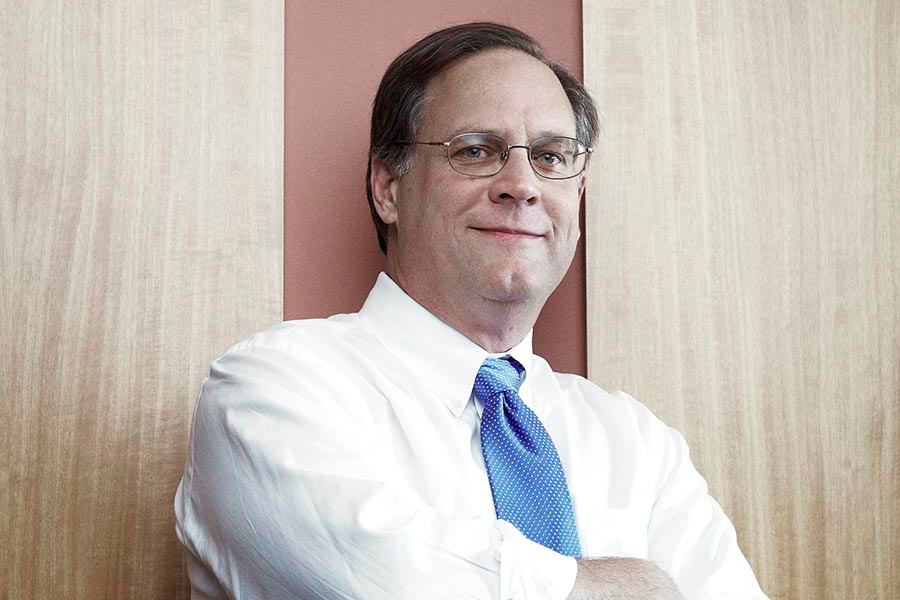Strategy Sessions
Incoming Essex CEO Michael Schall was the obvious man for the job. That doesn’t mean the board wouldn’t put him to the test.
Although the succession plan that saw Michael Schall replace Keith Guericke as president and CEO of Essex Property Trust last November was preordained for years in advance, Schall nevertheless felt some appropriate job applicant heat as the transition officially unfolded.
“I definitely felt like I was interviewing for the job,” says Schall of the process, which included a competitive analysis report on Essex that the board of directors requested from Schall as one of the prerequisites of the job.
While Schall’s eventual, 50-page report and accompanying PowerPoint presentation covered some established ground (Essex would attempt to remain in the top quartile of operating cash flow growth among its REIT peers, for example), the presentation also modestly acknowledged a compression in the firm’s competitive advantage among high-barrier-to-entry apartment operators and offered a strategy to get the advantage back.
“We have been less so at the top of the chart for the past two or three years, and one of my goals is to reinvigorate and refine Essex,” Schall says. “Going forward, our biggest engine of growth is the operations of a $6 billion real estate portfolio, but I do think there are other markets that can generate superior long-term growth and are consistent with our founding principles of supply-constrained markets, diversified economies, and a strong job base. They are the markets we are not in—Washington, D.C., Boston, New York, and Northern Virginia.”
Schall says growth into such new markets likely won’t be immediate, and, indeed, the analyst community feels large-scale acquisitive expansion remains Essex’s greatest challenge. In 2006, Essex attempted to purchase its way into the Mid-Atlantic with the acquisition of Town and Country Trust but ultimately lost out to Morgan Stanley’s $1.5 billion bid for the company.
“There was pushback from some investors on Town and Country, and one of the challenges that might still come up for Essex is making the market comfortable with growth into new markets,” says Alexander Goldfarb, a sell-side analyst at New York City–based Sander O’Neil. “But I think the Town and Country deal would have worked, and remain of the opinion that if Essex wants to go to a new geography, they can be just as successful.”
Schall’s competitive analysis agreed, and the CEO points to nearly $600 million in 2010 acquisitions as proof positive of the firm’s buying brawn. As to when that purchasing power lands the REIT on the East Coast, Schall remains strategically tight-lipped.
“There remain markets that we are interested in,” he says. “As for the timing, I can only say not right now.”
For Schall, this was the most difficult period of the transition. “Change is never easy, and reassuring and re-establishing my personal relationships with the senior executives was painful at first,” Schall says. “Essentially, everyone loves Keith and his management style, and I needed to walk in and articulate my own view of the world and establish direct-report relationships with a long-term, very capable executive staff. It was uncomfortable for all of us in the beginning, but I also think we have worked through those issues.”
Helping with the working out of those relationships was Steve Umphreys, founder of Menlo Park, Calif.–based Umphreys Group, an executive coaching, board advisement, succession planning, and leadership development HR consultancy. Recommended to Schall by Essex chairman George Marcus, Umphreys assisted the senior management team with leadership and transition counseling highlighted by an anonymous, 360 degree review of Schall as he assumed the CEO chair. “The consultant talked with each of the senior execs to solicit both positive and negative feedback concerning my management style,” Schall says. “The intent was to get an honest assessment of the company and what was on their minds. That process resulted in a lot of useful advice.”
Essex senior vice president of development John Eudy participated in the feedback sessions and says the process was integral to the success of the management changeover, even if it was given a raised eyebrow by senior staffers who had mostly been working together for two decades.
“We’ve all worked together for so long that it seemed like the transition would be natural, so initially I was taken aback by the need for an HR consultant,” Eudy says. “But anytime you have a change in leadership, you want to make sure all eyes are on the transition. I think Mike had more anxiety than the rest of us, but that was an extension of how much thought he was putting into the process. I was never much of a believer in the need for an HR consultant, and now I appreciate and understand the strategic role it plays.”
SPECIAL OPERATIONS
Understanding the strategic role of different business verticals within Essex was essential to Schall’s ascension to the president and CEO helm. When the board of directors began pushing for succession planning in 2005 with Schall as the heir apparent, the then-CFO, who had navigated the firm through its 1994 initial public offering and sat in subsequent charge of the balance sheet for more than a decade, was moved to the position of COO. Not just an effort to get Schall acquainted with on-site property, asset, and portfolio management tactics, the move was also in anticipation of long-term growth opportunities at Essex, particularly the thought that operations would one day eclipse acquisitions and development as a growth vehicle.
